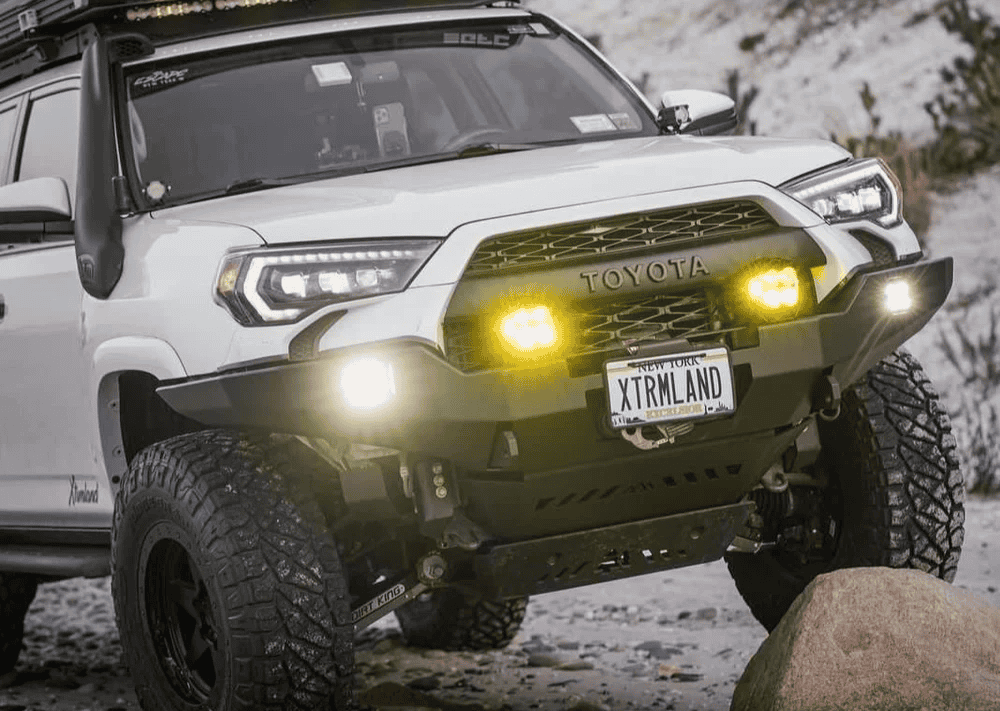Overland Vehicles

An overland rooftop tent rides on your vehicle’s rack, opens in seconds or minutes, and keeps sleepers above mud, bugs, and uneven ground. The design splits into two families. Softshell tents fold out with a fabric canopy that creates roomy headspace and an annex option. Hardshell tents open like a clamshell or pop straight up, favoring speed, aerodynamics, and weather resistance. Shoppers often compare four person softshell options such as a nomadic 4 roof top tent to faster pitching hardshells for long road days.
Softshells usually provide more floor area for families and tall sleepers, plus annex add ons for gear or a changing room. Hardshells trade some space for rapid setup, a lower profile while driving, and better wind shedding at highway speeds. Weight and cost also differ, so weigh your needs for space versus travel efficiency.
Three season tents suit spring through fall with strong airflow and rain protection. Four season models add tighter fabric weaves, draft control, and snow load considerations for winter road trips. Remember that season labels vary by brand, so look for real features such as insulated floors, storm skirts, and robust rainfly coverage.
Look for UV resistant fabric, thick ripstop weaves, and seam taping or welded construction. A sturdy base, aluminum frames, and corrosion resistant hardware prevent flex and fatigue. Zippers, mesh, and ladder joints take daily abuse, so inspect those components closely before purchase.
A safe setup starts with your vehicle’s dynamic and static roof load ratings. Dynamic covers driving, braking, and cornering forces, while static covers the parked load from sleepers. Make sure tent weight plus crossbars and cargo falls within the numbers. Pair the tent with a reputable rack rated for your roof, and mount using hardware that spreads loads evenly along OEM or aftermarket attachment points.
Dynamic capacity is lower because of movement and wind. Static capacity is higher due to the vehicle’s structure bearing weight at rest. Respect both to protect your roof and maintain predictable handling on trails and pavement.
Crossbars must match tent mounting channel width and be spaced per the tent maker’s guide. Use backing plates and lock nuts, then re torque hardware after the first few trips. If you add awnings or recovery gear, confirm total roof weight and the balance front to back.
Hardshells typically reduce wind noise and drag. Softshells benefit from travel covers that cinch tight and shed air. Mount as low as possible without interfering with doors or hatch openings to keep the center of gravity in check and maintain a relaxed highway ride.
Quick deployment matters at the trailhead after a long drive. Hardshells shine for fast one person setup, while modern softshells can also pitch quickly with organized poles and color coding. Check ladder angle, rung comfort, and weight rating. Inside, focus on a supportive mattress, real sleep length, and how the walls shed condensation overnight.
Measure the sleeping platform, not the box dimensions. Many four person labels assume tight quarters, so confirm the true usable length and width. A memory foam or high density foam pad upgrades sleep without adding much height when closed.
Sleeping breath adds moisture, so airflow matters. Vent windows on opposite walls, anti condensation mats under the mattress, and a slight crack at the peak help keep bedding dry. In humid regions, pack a small microfiber towel to wipe walls each morning.
Pair a four season tent with an insulated base, wind blocking outer fabric, and tight door seals. A warm rated sleeping bag and a breathable liner handle frosty nights. Bring a boot mat for the ladder entrance and store footwear in an external sling to keep the floor clean.
Many campers compare models like the ovs nomadic 4 against compact hardshells to balance value, space, and speed. Whichever way you go, plan a clean wire route for scene lights and consider a dedicated rack for shovels, traction boards, and fuel so the tent remains easy to deploy. Regularly inspect bolts, hinges, and fabric after washboard roads, retighten as needed, and rinse off salt or red clay before long term storage.
When it is time to turn the research into a trustworthy install, a shop that understands roof structure, accessory routing, and travel weight makes the difference. If you are building a trail focused rig, start with the platform then integrate the tent, power, and lighting as a system. See how full vehicle packages come together on Explore overland rigs. For tailored mounting, wiring, racks, and weatherproof accessories that suit your routes, review our Custom overland upfit. If you want a sense of our process, client experience, and quality standards, visit Why choose OZK Customs.
Choosing an overland rooftop tent should feel simple once you stack the facts. Match your vehicle limits, your climate, and your pace of travel. Then commit to a professional installation that keeps every mile quiet, dry, and safe. Share your trip plan and we will help you build a setup you can trust from the first climb up the ladder to the last night under the stars.
Ready to dial in the right tent and a rock solid install? Share your trip goals and vehicle details. OZK Customs will design a dependable mount, wire lighting, and hand off a trail tested setup built for the miles ahead.
ADDRESS:
6159 E Huntsville Rd, Fayetteville, AR 72701
PHONE:
(479) 326-9200
EMAIL:
info@ozkvans.com